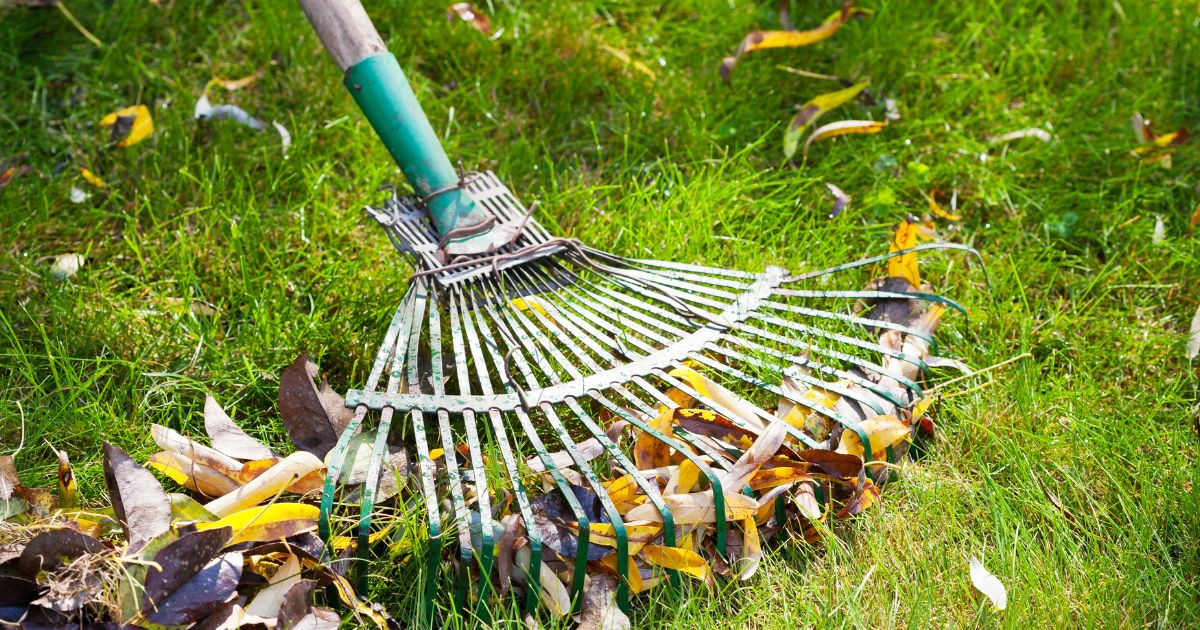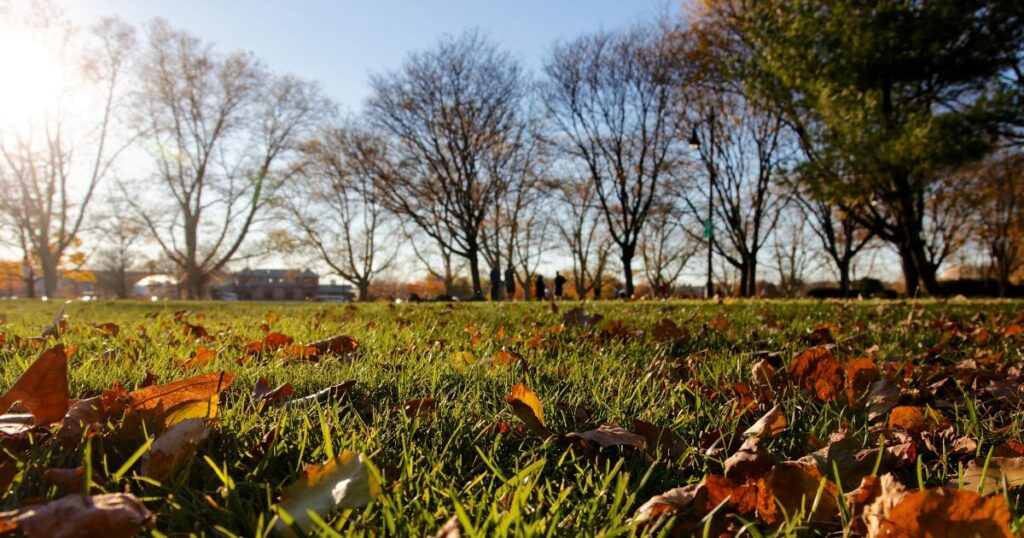Would you like to have a beautiful, lush lawn all year round?
Many homeowners give their yards plenty of love and care, but the changing weather takes away their best efforts.
The secret to delighting your eyes with a vibrant and healthy lawn every day of the year is working with the seasons.
In this article, lawn care experts will share their best tips for growing and maintaining a verdant garden year-round.
This season-by-season care guide will help you understand your lawn’s needs and how to meet them to grow the yard of your dreams.
Spring Lawn Care Maintenance Checklist
Spring lawn care—this is where the fun begins!
Before you start working on your yard, make sure that the surface is firm and the grass is starting to grow. Any premature maintenance will be fruitless, or worse, it could damage your lawn (especially if there is snow on the ground).
Lawn Raking
Let’s start by raking your lawn. This task is essential as it helps clear away moss, leaves, dead grass, and other debris that piled up during the winter.
This deep clean-up will allow air and sunlight to reach and nurture your soil. Raking will also prevent mold and diseases from spreading once the weather gets warmer.
Experts recommend using a flexible leaf or lawn rake. These tools enable you to gently pull up any brown grass and debris without damaging your lawn.
Treat the Soil
Next up, you must check your solid to see what it needs.
A soil test will tell you what nutrients your lawn is missing. Once you have the result, you’ll know what to add to create optimal growing conditions.
You can perform this test about every three years.
Fertilize
Spring is also the perfect time to fertilize; if you tested your soil, you already know precisely what type of fertilizer your lawn needs.
A balanced fertilizer will give your lawn the boost it needs to grow vibrant and healthy after a cold winter.
Seed Bare Sports
As the last essential step of spring lawn care, you should tackle bare or thin spots.
Spring is the ideal time to overseen worn areas for a thicker, more even lawn. You can use zoysia grass plugs to save time on growing new sections and ensure a consistent look throughout your lawn. Their ability to spread and fill in gaps makes them a practical solution for repairing patchy areas with minimal effort.
Summer Lawn Care Maintenance Checklist
Summer lawn care is all about keeping it hydrated and free from pests and diseases.
Water (But Not Too Much)
When it comes to watering your grass during the summer, less is more.
Many homeowners make the mistake of overwatering their lawns, damaging their grass root system.
The trick is to water abundantly but not so frequently.
Generally, watering once or twice a week is enough (less if you are getting too much rain).
Weed Control (Before They Spread)
Summer is weed’s favorite season. To avoid them from spreading, you must deal with weed as soon as you spot them.
You can use your hands or a weed tool to remove them from the root.
Mowing (High)
In the summer, the best time to mow is early in the morning or late in the evening.
Aim to mow regularly (about once a week) and adjust the mower blades to cut the grass high. That will encourage grass plants to grow thicker and deeper roots, promoting a lusher lawn.
Watch Out for Pests
Pests are summer’s biggest threat. If you are not careful, they can cause a lot of damage to your beautiful lawn.
Check regularly for signs of pests or diseases, and act promptly.
Fall Lawn Care Maintenance Checklist
During the fall, you must prepare your lawn for the cold winter months, ensuring it comes back strong in the spring.
Aerate Your Lawn
Aeration may sound fancy, but it’s actually a simple process that brings many benefits to your lawn.

Aerating your lawn during fall loosens the soil, improving air, water, and nutrients flow to the grassroots.
Overseeding
If you want a lush and verdant lawn next spring, fall is the time to think ahead.
Chilly fall weather is the perfect temperature for seeds to germinate and grow strong roots.
Mow (Shorter)
In late fall, drop your mow blades and cut the grass 1 or 2 inches shorter than usual.
During winter, grass that is too short can go into shock due to the cold, while long grass is at greater risk of developing snow mold.
The goal is to strike a balance—not too long or too short.
Fertilize
If you have cold-season grass, fall presents the ideal growing conditions.
Help your lawn battle the cold winter and give it a good head start by fertilizing it during the fall.
Winder Lawn Care Maintenance Checklist
Finally, we have reached winter. This season may seem like a time to forget about your lawn, but a few simple maintenance steps can make a world of difference.
Beware of Winter Mold
Winter mold signs usually go unnoticed until spring, making it a serious threat to your lawn.
This problem is caused by a fungus known as snow mold, which tends to appear as circular patches of “dead” or matted grass.
To prevent this, cut your grass a bit shorter before the first snowfall and avoid pilling up snow on your lawn.
Frost Protection
Use plant covers, burlap, or shrub wraps to protect vulnerable plants and grass from frost and harsh winter conditions.

Avoid walking or driving over frosted grass to prevent further damage.
Prepare for Spring
Towards the end of winter, begin to prepare for spring.
Ensure all your lawn maintenance tools are ready to go. Schedule a maintenance appointment with lawn care experts to rejuvenate your lawn after the harsh winter.
Final Thoughts
Give your lawn the love and care it needs throughout each season, and enjoy a healthy, lush garden all year round.
